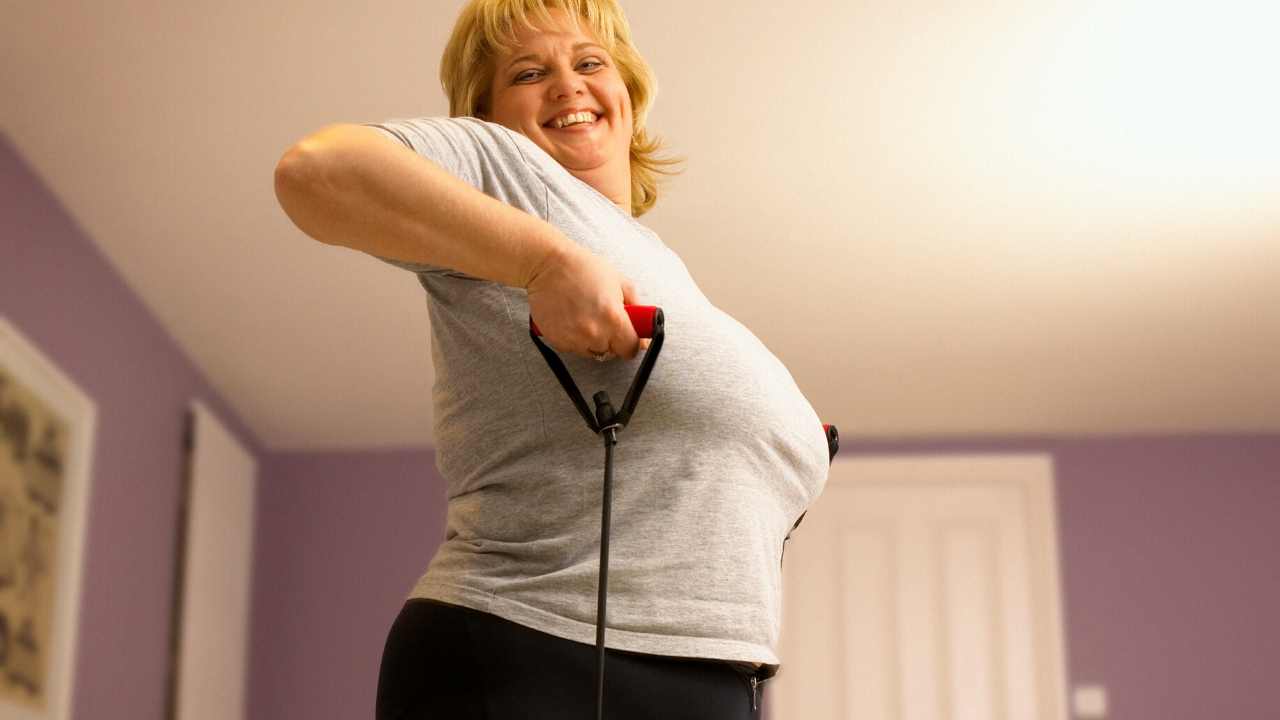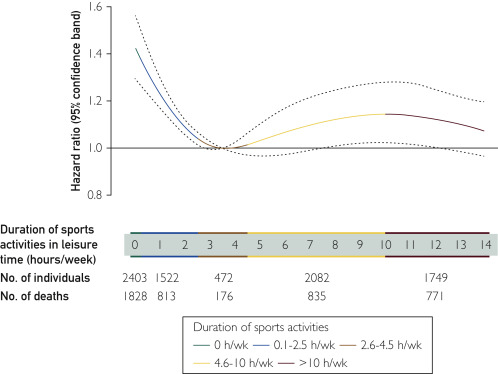
You can't just develop a routine if you want to be a fit person. It is not necessary to do the same things every single day. However, you can be creative and try something completely different. Don't force yourself to exercise if you don't enjoy it. Start light and then increase to a heavier weight. Don't be afraid to change the activity as you progress through the weeks.
A fitness lifestyle is more than simply a way to burn calories and build muscles. You can also eat right and be more active. Although it's not easy, the results are worthwhile. It can improve your body’s overall health as well as give you motivation to keep going. It can also make you feel great. This is why it is a good idea for you to continue your fitness program. You will be glad that you did.

A fitness lifestyle is not just about building muscle and losing weight. This can help you manage your anxiety and depression. A healthy lifestyle also provides a structure and routine for the aimless. This will make your life easier and more organized. It is a common mistake for people to rush into starting a new exercise program thinking they will reach their fitness goals in an instant. This is counterproductive and will drain your body as well as your mind.
You need to be committed and consistent in your fitness goals. It is important to establish a consistent routine. It can be hard to fit exercise into your daily schedule. But, setting aside time for it will make it easier. It's possible to watch TV, read, or take a walk while working out. You should include different types activities when you plan your schedule. It will be easier to stay motivated if you do different types of exercises on different days. By doing so, you will avoid boredom and keep the exercises interesting.
A fitness life style requires you to become organized. You must prioritize your daily activities to make it possible to exercise and take care of other responsibilities. Setting goals is important. It will help to stay focused by having a plan. When you set goals, you'll have something to strive for. You'll be motivated to stick with your fitness program. However, you may feel discouraged at first, but it's essential to set some goals and stay focused. If you don't lose weight, you'll be more happy with yourself.

It's not possible to live a healthy life without exercising. It's not easy to get motivated when you're vacationing, but it's important to stay committed to your goals. Once you've made a commitment, you'll be much more likely to keep it up. This is especially true if your travel plans include a commitment to keep it up. You should be active when you are on vacation.
FAQ
How often should i exercise?
It is important to exercise for a healthy lifestyle. There is no time limit on how much you should exercise. Finding something that you love and sticking with it is the key.
Three times a week, you should be aiming to complete 20-30 mins of moderate intensity activity. Moderate intensity will mean that you'll continue to be exerting yourself afterward. This type works out burns around 300 calories.
Walk for at least 10 minutes four days a weeks if you prefer walking. Walking is low-impact and easy on the joints.
Jogging three times a week for 15 mins is enough if you want to run. Running can help you burn calories and to tone your muscles.
You should start slowly if it's your first time exercising. Begin with 5 minutes of cardio every other day. Gradually increase your cardio time until you reach the goal.
Do I need to count calories?
It is possible to wonder "What diet is best for me?" or "is counting calories necessary?" Well, the answer depends on several factors including your current health status, your personal goals, your preferences, and your overall lifestyle.
The Best Diet for Me - Which One is Right For You?
My current health, my personal goals and lifestyle will determine the best diet for me. There are many good and bad diets. Some diets work better than others. So what should I do? How do I make a good decision?
These are the main questions addressed by this article. This article begins with a brief overview of the various types of diets that are available today. After that, you will learn about the pros and disadvantages of each type. Finally, we'll discuss which one is best.
Let's begin by briefly reviewing the different types and diets.
Diet Types
There are three types of diets available: ketogenic, high-protein, and low fat. Let's discuss them briefly below.
Low Fat Diets
A low-fat diet is one that limits the intake of fats. This is achieved through reducing intakes of saturated fats (butter and cream cheese, for example). You can replace them with unsaturated oils (olive oil and avocados) Low fat diets are often recommended to those who wish to lose weight quickly. This kind of diet could cause problems like constipation or heartburn and indigestion. If a person doesn’t receive enough vitamins from their foods, this can lead to vitamin deficiency.
High Protein Diets
High protein diets reduce carbohydrates to favor of proteins. These diets have higher protein levels than other diets. These diets can help increase muscle mass and decrease calories. Unfortunately, they can't provide adequate nutrition for those who eat regularly. They are not suitable for all people because they can be restrictive.
Ketogenic Diets
The keto diet is also known as the keto diet. They are high-fat and low in carbs and protein. They are commonly used by athletes and bodybuilders, as they allow them train harder and more frequently without getting tired. However, they must be used with caution to avoid nausea, headaches and fatigue.
What is the difference of a virus from a bacteria?
A virus can be described as a microscopic organism that cannot reproduce in another cell. A bacterium can be described as a single-celled organism which reproduces by splitting in two. Viruses have a very small size (about 20 nanometers), while bacteria is larger (up to one micron).
Viruses are usually spread through contact with infected bodily fluids, including saliva, urine, semen, vaginal secretions, pus, and feces. Bacteria is usually spread directly from surfaces or objects contaminated with bacteria.
Viruses can get into our bodies through cuts and scrapes on the skin, bites, and other injuries. They may also enter through the nose, mouth, eyes, ears, vagina, rectum , or anus.
Bacteria can be introduced to our bodies by cuts, scrapes or burns. They may also come into our bodies through food, water, air, soil, dust, or animals.
Both bacteria as well as viruses can cause illness. However, viruses cannot reproduce within their hosts. So they only cause illnesses when they infect living cells.
Bacteria may spread to other people and cause sickness. They can infiltrate other parts of the body. Antibiotics are needed to eliminate them.
What can I do to lower my blood pressure?
First, you must determine what is causing high blood pressure. Next, you will need to determine what is causing high blood pressure. These could include taking medication, eating less salt and losing weight.
Make sure you're getting enough exercise. If you don't have time for regular exercise, then try walking as often as possible.
A gym membership is a good idea if you don't like how much exercise your doing. You will likely want to join an exercise group that shares your goals. It's much easier to follow a routine if someone is with you at the gym.
Statistics
- According to the Physical Activity Guidelines for Americans, we should strive for at least 150 minutes of moderate intensity activity each week (54Trusted Source Smoking, harmful use of drugs, and alcohol abuse can all seriously negatively affect your health. (healthline.com)
- According to the 2020 Dietary Guidelines for Americans, a balanced diet high in fruits and vegetables, lean protein, low-fat dairy and whole grains is needed for optimal energy. (mayoclinichealthsystem.org)
- The Dietary Guidelines for Americans recommend keeping added sugar intake below 10% of your daily calorie intake, while the World Health Organization recommends slashing added sugars to 5% or less of your daily calories for optimal health (59Trusted (healthline.com)
- This article received 11 testimonials and 86% of readers who voted found it helpful, earning it our reader-approved status. (wikihow.com)
External Links
How To
What does the term "vitamins" mean?
Vitamins can be described as organic compounds found in food. Vitamins are necessary for us to absorb nutrients in the foods we consume. The body cannot make vitamins; therefore, they must be obtained from food.
There are two types if vitamins: water soluble, and fat soluble. Water-soluble vitamins dissolve easily when they are dissolved in water. Examples include vitamin C,B1 (thiamine), B2 (riboflavin), B3 (niacin), B6 (pyridoxine), folic acid, biotin, pantothenic acid, and choline. Fat-soluble vitamins are stored in the liver, fatty tissue and kidneys. Examples include vitamin D, E, K, A, and beta carotene.
Vitamins are classified according to their biological activity. There are eight major categories of vitamins.
-
A - Vital for normal growth and maintaining good health.
-
C - important for proper nerve function and energy production.
-
D – Essential for healthy teeth, bones and joints
-
E is necessary for good vision, reproduction.
-
K – Required for healthy nerves & muscles.
-
P - essential for strong bones, teeth and tendons
-
Q - Aids digestion and iron absorption
-
R - Required for red blood cell production
The recommended daily allowance for vitamins (RDA) varies based on gender, age, and physical conditions. The U.S. Food and Drug Administration, (FDA), sets the RDA value.
For example, the RDA for vitamin A is 400 micrograms per dayfor adults 19 years or older. For fetal development, pregnant women need 600 mg per day. Children ages 1-8 require 900 micrograms per day. Children under 1 year old require 700 micrograms daily, while infants over one year old need 500 micrograms every day. This decreases between 9 and 12 months.
Children aged between 1-18 years require 800 micrograms of sugar per day, while overweight children need 1000 micrograms. Children who are underweight receive 1200 micrograms every day to meet their nutritional requirements.
Children between 4 and 8 years old with anemia will need 2200 micrograms daily of vitamin C.
2000 micrograms are required daily for good health in adults over 50. Mothers who are pregnant, nursing, or have a high nutrient need will require 3000 micrograms a day.
1500 micrograms are required daily by adults over 70 because they lose approximately 10% of their muscle each decade.
Women who are pregnant or lactating need more than the RDA. Pregnant women need 4000 micrograms per dayduring pregnancy and 2500 micrograms per day after delivery. Breastfeeding mothers need 5000 micrograms per day when breast milk is being produced.